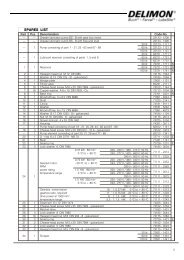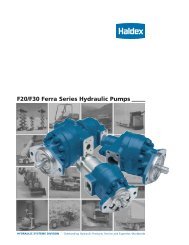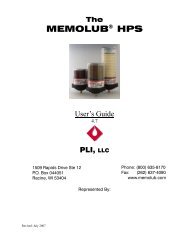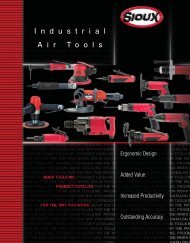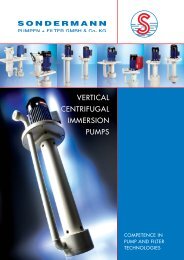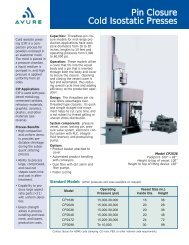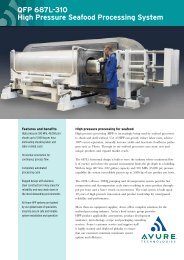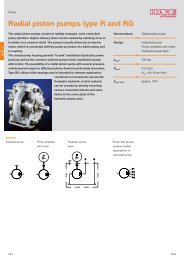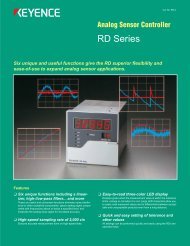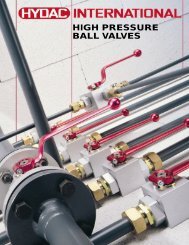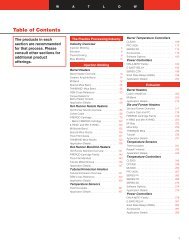THE ADHESIVE SOURCEBOOK - Hasmak.com.tr
THE ADHESIVE SOURCEBOOK - Hasmak.com.tr
THE ADHESIVE SOURCEBOOK - Hasmak.com.tr
- No tags were found...
Create successful ePaper yourself
Turn your PDF publications into a flip-book with our unique Google optimized e-Paper software.
agency approvalsYour Source forLoctite ® Productsfor design, assembly,manufacturing & maintenanceFAQs[ Durometer Hardness ]Durometer hardness is a property presented on technicaldata sheets that shows how hard the resin is in the curedstate. A durometer gauge is the actual measuring deviceconsisting of a small drill or blunt indentor point underpressure. Different measurement scales are used for differentmaterials depending on how soft or hard the material. Thefollowing chart <s<strong>tr</strong>ong>com</s<strong>tr</strong>ong>pares three (3) different graduatedmeasurement scales and relates hardness values to some<s<strong>tr</strong>ong>com</s<strong>tr</strong>ong>mon objects as well as Loctite ® brand products.ShoreAShoreDRockwell MReferenceObject30 – – Art Gum Eraser 5140 40 – – Pink Pearl Eraser 5900 ®50 15 – Rubber Stamp –60 – – Pencil Eraser 5699 70 30 – Rubber Heel –80 – – Rubber Sole –90 45 – Typewriter Roller 366 100 55 – Pipe Stem 3106 – 74 0 Textbook Cover 334 – 78 32Douglas FirPlywood– 82 63 – E-60HP – 86 95 Hardwood Desktop –– 90 125 Glass or Formica ––Loctite ®ProductThe higher the number within each scale, the harder the material.Shore readings are typically used for plastics. Shore A is for softermaterials; Shore D is for harder materials. Rockwell readings aretypically used for metals.[ Mathematical Conversions ]The following are some <s<strong>tr</strong>ong>com</s<strong>tr</strong>ong>mon conversions thatmight be helpful when utilizing Loctite ® products:• 1 milliliter (ml) = 1 cubic centimeter (cc)• 1,000 ml = 1 liter• 29.5 ml = 1 fl. oz.• 3.78 liters = 1 gallon• 473 ml = 1 pint• 454 grams = 1 lb.• 947 ml = 1 quart• 1 kilogram = 2.2 lbs.• Weight to Volume: grams ÷ specific gravity = cc (ml)• Volume to Weight: cc (ml) x specific gravity = grams• Density = specific gravity x 0.99823• Centipoises = centistokes x density (at a given temp.)• Temperature: degrees F - 32 x 0.556 = degrees Cdegrees C x 1.8 + 32 = degrees F• Square Inches to Square Feet: ÷ by 144• Square Feet to Square Inches: x by 144• In./lbs. ÷ 12 = ft./lbs.• Ft./lbs. x 12 = in./lbs.• 16 in. oz. = 1 in. lb.• 192 in. oz. = 1 ft. lb.[ Area Coverage ]Flat Parts:Length x Width x Bondline Thickness x 16.4 = cc/mlrequirement per partNon-threaded Cylindrical Parts:Diameter x Engagement Length x Bondline Thickness(on radius / per side)x 3.14 x 16.4 = cc/ml requirement per partPotting / Encapsulating Applications:Area (3.14 x R2) x Potting Depth x 16.4 = cc/mlrequirement per partFor no induced gap, make the bondline thickness figure 0.001";16.4 is a constant for converting cubic inches to cubic centimeters.193U.S.: 1-800-LOCTITE (562-8483) Canada: 1-800-263-5043 www.henkelna.<s<strong>tr</strong>ong>com</s<strong>tr</strong>ong>/loctite www.equipment.loctite.<s<strong>tr</strong>ong>com</s<strong>tr</strong>ong>



